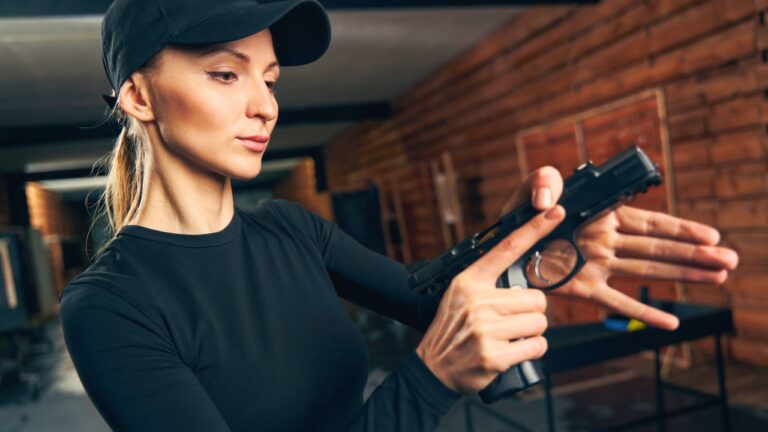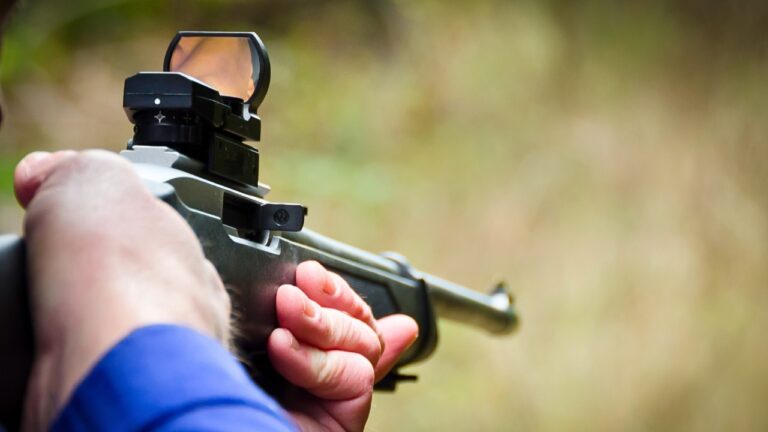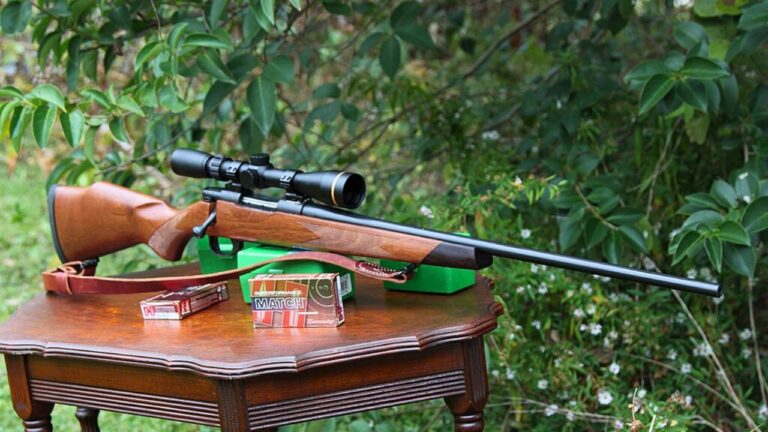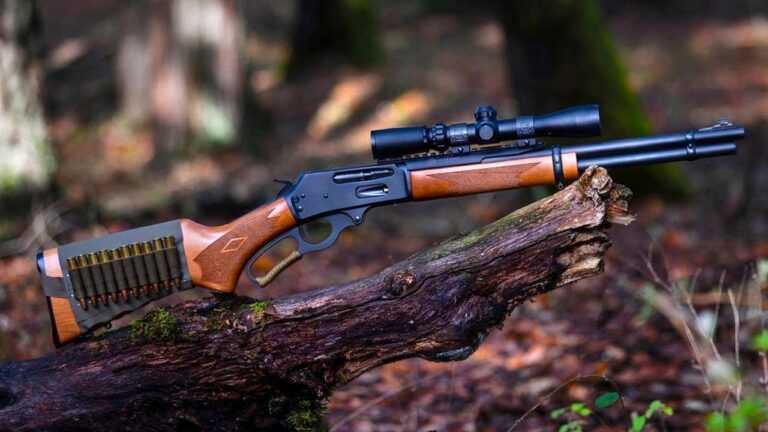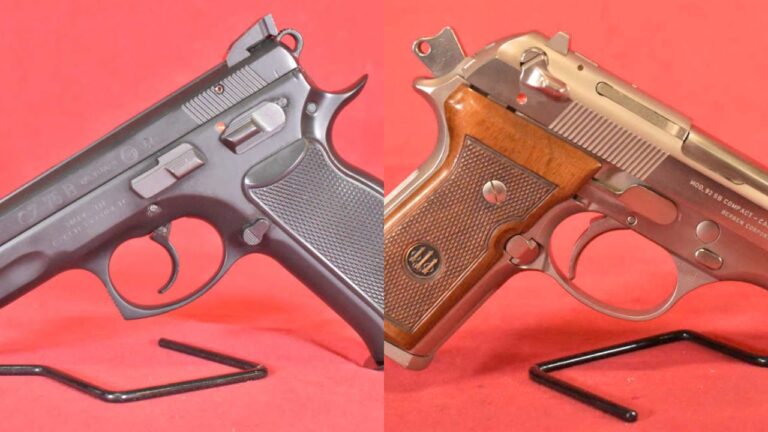Every guide has seen it happen—the hunter steps off the plane or climbs into the truck with a rifle that looks like it came straight from a catalog photo, polished and expensive. It’s the kind of gun that turns heads at camp, right up until it misses, jams, or falls apart halfway through the hunt. You can almost see the guide’s shoulders drop when it happens. The truth is, some firearms that look impressive at home don’t hold up when things get muddy, cold, or rushed. If you’ve ever hunted with someone who brought a range toy to a serious hunt, you know exactly the kind of embarrassment we’re talking about.
Remington 710
The Remington 710 might sound like a solid budget choice, but it’s one of those rifles that lets you down when it matters. The action feels gritty even when new, and the bolt has a habit of binding up at the worst time. Guides see these rifles jam mid-stalk more often than they care to admit.
Add in the cheap plastic stock and you’ve got a gun that flexes under a sling or bipod. It’s not that it can’t kill a deer—it can. But when a guide watches a hunter struggle to chamber a second round or clear a stuck shell, that’s when the real embarrassment begins.
Mossberg Patriot

The Mossberg Patriot looks the part, especially in fancy laminate or walnut, but that smooth finish hides some weaknesses. In wet or dusty weather, the bolt gets sticky and slow. The feeding isn’t terrible, but it’s far from smooth. For hunters who aren’t used to running bolts under stress, it can trip them up fast.
When a guide hands you a chance at a big bull and the bolt handle stops halfway closed, you can feel the tension rise. The Patriot works fine from a bench, but in the field—especially when it’s cold or dirty—it shows its price point fast.
Ruger American Rifle
The Ruger American is one of the most popular entry-level rifles out there, but guides know its quirks. The lightweight stock feels fine at first, until you load up a bipod or rest it against a rock. Flex in the fore-end can push shots wide without you even realizing it.
Inconsistent magazine fit is another issue. Some click in tight, others drop free or misfeed. For a guided hunt, that’s the kind of detail that can turn an easy opportunity into an awkward apology. It’s a great rifle for a weekend range trip, but not one a guide wants to see in elk camp.
Savage Axis

Every guide’s seen one of these come off the bush plane wrapped in duct tape and optimism. The Savage Axis is accurate enough in perfect conditions, but its rough bolt and budget trigger make real-world follow-ups clumsy. Add in a sticky safety and a stock that warps in the sun or cold, and you’ve got a recipe for frustration.
You can make them work with enough tuning and patience, but most guides don’t have time for that. The Axis might be fine for stand hunting in mild weather, but when you’re moving through timber or crawling into position, it’s not the rifle you want to rely on.
Winchester XPR
The XPR has a solid name behind it, but it’s not a Model 70. The action feels fine in the store, but in the field, it’s easy to short-stroke or misfeed, especially under stress. The polymer magazine isn’t the toughest either—drop it once in rocky terrain and you’ll be wishing for something metal.
Guides like simple rifles that run every time. The XPR’s problem is that it tries too hard to be a modern budget rifle and loses the durability that made Winchester famous. It’s not unreliable—it’s just not confidence-inspiring when the wind’s howling and there’s one shot to make.
Remington R25

The R25 was supposed to bring AR-style hunting into the mainstream, but its bulky frame and tight tolerances make it struggle in cold or dusty conditions. A little grit in the action and you’re manually clearing jams instead of shooting. Many guides quietly cringe when one shows up, especially if the hunter hasn’t run it hard before.
The rifle’s heavy weight and awkward balance also slow you down in the field. If everything works perfectly, it’ll drop a deer clean. But in the real world—mud, wind, cold—it’s more trouble than it’s worth.
Weatherby Vanguard Synthetic
The Weatherby name carries weight, but the Vanguard Synthetic is one of those rifles that looks tougher than it is. The action is fine, but the injection-molded stock transmits every bit of recoil into your shoulder and doesn’t handle moisture well. If you hunt in snow or rain, you’ll start to notice fit issues between the stock and action.
Guides respect rifles that can take a beating and stay zeroed. The Vanguard can lose consistency when it’s been banged around, and the cold doesn’t help. It’s a rifle that looks professional until it’s put to work.
Tikka T3x Lite

The Tikka T3x Lite shoots well—no one argues that—but its ultralight build makes it harder to handle than most realize. Under recoil, it jumps, and light barrels heat fast. Miss your first shot, and your second might not land where you expect. Guides see plenty of hunters chase groups across a hillside because of that.
It’s not a bad rifle by any means—it’s just not the forgiving tool people think it is. In guided hunts, forgiveness matters. A steady rifle helps calm the nerves, and the T3x Lite isn’t built for that.
Browning X-Bolt Composite Stalker
The X-Bolt looks professional and carries well, but its sleek lines hide a few issues in real hunting weather. The narrow bolt handle can be hard to grab with gloves, and the trigger guard design doesn’t leave much space for cold fingers. Add in Browning’s tight magazine tolerances, and it’s easy to fumble reloads under pressure.
A guide might not say it outright, but they’ll notice when you’re fighting the gun instead of running it smoothly. The X-Bolt’s precision machining is great in theory, but sometimes a little looseness is what keeps a rifle running when the air’s freezing.
Springfield 2020 Waypoint

The Waypoint earned attention for its modern design and carbon-fiber build, but guides know how finicky that can be in the field. Light rifles are great for packing but terrible for steady shooting under stress. The cold also affects carbon barrels differently, sometimes shifting impact slightly when temperatures swing.
It’s a beautiful, accurate rifle—but it’s also unforgiving. You need perfect form, perfect ammo, and perfect conditions to make it shine. In the real world, guides prefer something heavier and steadier. When your rifle costs as much as the hunt itself, expectations are high—and missing that one shot feels twice as painful.
Like The Avid Outdoorsman’s content? Be sure to follow us.
Here’s more from us:
Calibers That Shouldn’t Even Be On the Shelf Anymore
Rifles That Shouldn’t Be Trusted Past 100 Yards
*This article was developed with AI-powered tools and has been carefully reviewed by our editors.

